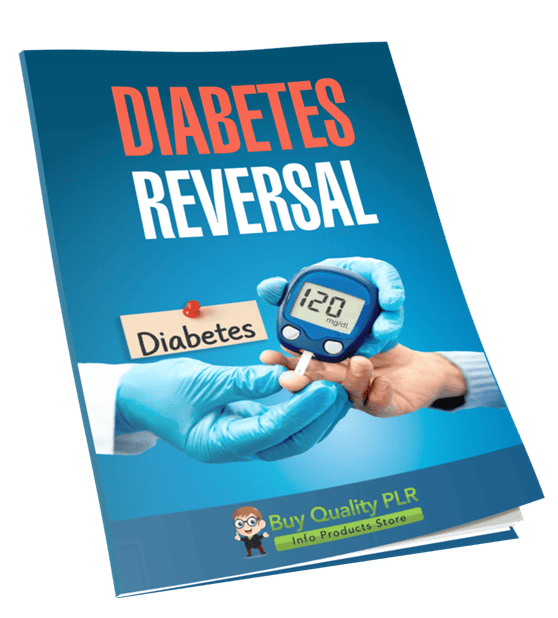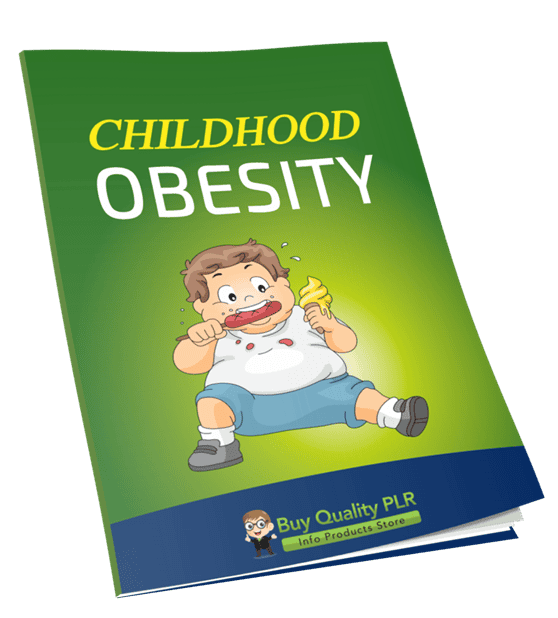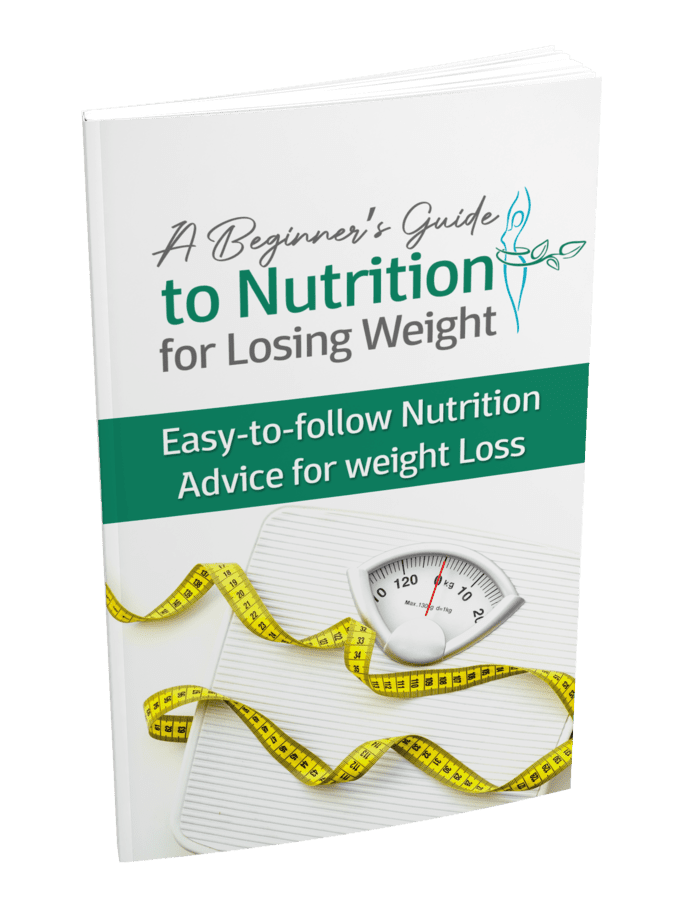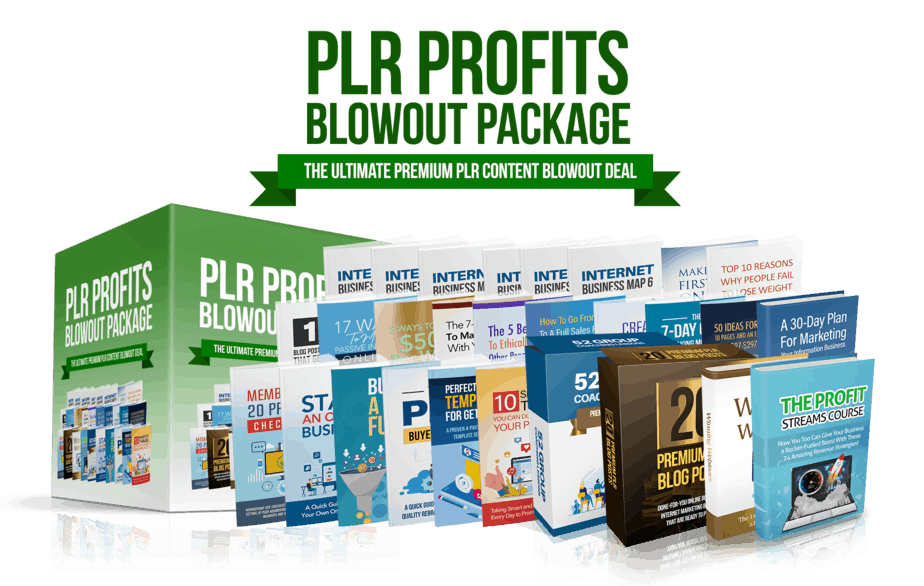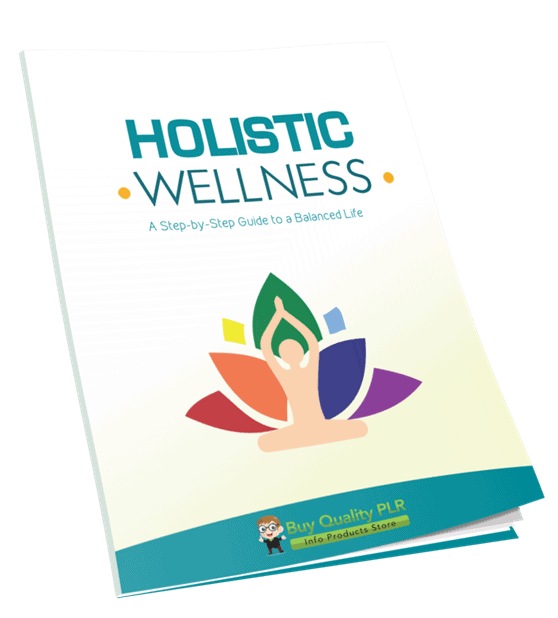
Holistic Wellness PLR Course 22k Words
in PLR Checklists , PLR eBooks , PLR eCourses , PLR List Building Reports , Premium PLR , Premium PLR eBooks , Premium PLR Reports , Premium White Label Brandable PLR Coaching Courses , Self Care PLR , Self Help PLR , Wellness PLR , Wellness PLR eBooksChoose Your Desired Option(s)
has been added to your cart!
have been added to your cart!
#holisticwellness #wellnesscourse #healthplr #mindbodysoul #plrcontent #selfcare #wellnessbusiness #holisticliving #plrcourse
Welcome to Holistic Wellness: A Step-by-Step Guide to a Balanced Life! In this course, you’ll learn to nurture your mind, body, and spirit to create a more balanced, healthy lifestyle. Holistic wellness is all about integrating physical, emotional, mental, and spiritual well-being, and this course will guide you every step of the way.
Whether you’re looking to improve your overall health or seeking deeper connection and purpose in your life, this course will provide the tools and guidance needed to transform your life. By the end of this course, you’ll have a practical, holistic wellness plan you can follow each day.
Presenting…
Holistic Wellness PLR Course 22k Words
Course Breakdown:
The Holistic Wellness PLR Course is broken down into 5 actionable modules that will help you understand and integrate wellness into every area of your life. From self-assessment and mental wellness to nourishing your body and living a soulful life, you’ll gain comprehensive insights and strategies to improve your well-being.
Module 1: Understanding Holistic Wellness
💡 Goal: Lay the foundation for holistic wellness by understanding its dimensions and setting personal goals.
- Step 1: What is Holistic Wellness?
Understand the 7 key dimensions of wellness—physical, mental, emotional, spiritual, social, environmental, and occupational—and how they interconnect. - Step 2: Why Balance Matters
Discover how imbalance in one area can affect your overall health and why addressing all areas of wellness leads to better quality of life. - Step 3: Self-Assessment for Wellness
Take a wellness audit to assess your current state in each area of life and understand where you can make improvements. - Step 4: Setting Personal Wellness Goals
Learn how to create specific, measurable goals tailored to your needs, making wellness feel achievable.
Module 2: Nurturing the Mind – Mental & Emotional Wellness
💡 Goal: Empower you to manage your thoughts and emotions for greater well-being.
- Step 1: Managing Stress Effectively
Learn techniques like deep breathing, mindfulness, and journaling to reduce stress and promote mental clarity. - Step 2: Cultivating a Positive Mindset
Use gratitude, affirmations, and reframing negative thoughts to boost your mindset and improve emotional wellness. - Step 3: Emotional Awareness & Expression
Explore healthy ways to acknowledge, process, and express emotions while avoiding overwhelm. - Step 4: Building Resilience & Inner Strength
Learn to bounce back from challenges with tools like problem-solving and self-reflection to strengthen your resilience.
Module 3: Caring for the Body – Physical Wellness
💡 Goal: Focus on physical health to ensure vitality, energy, and longevity.
- Step 1: Eating for Wellness
Understand the principles of balanced nutrition and how to eat mindfully to fuel your body for optimal health. - Step 2: Movement & Exercise That Feels Good
Find an exercise routine that works for you, whether it’s yoga, walking, or dancing—anything that promotes movement and joy. - Step 3: Prioritizing Rest & Quality Sleep
Learn how to create a sleep routine that improves your focus, energy, and overall physical health. - Step 4: Detoxing from Harmful Habits
Identify and reduce habits like excess sugar, alcohol, and screen time that can hinder your physical well-being.
Module 4: Soulful Living – Spiritual & Social Wellness
💡 Goal: Cultivate meaningful connections and a sense of purpose in your life.
- Step 1: Finding Your Purpose & Passion
Explore activities that ignite joy and bring meaning to your life, helping you reconnect with your inner self. - Step 2: Creating a Mindful Morning & Night Routine
Design calming daily rituals that help you feel grounded, centered, and aligned with your spiritual journey. - Step 3: Strengthening Relationships & Connections
Learn how to build deeper, more meaningful relationships with loved ones and your community. - Step 4: Practicing Gratitude & Letting Go
Develop habits of forgiveness and gratitude that bring peace and harmony into your life.
Module 5: Bringing it All Together – Sustainable Wellness Practices
💡 Goal: Make wellness a lifelong practice with a sustainable plan for health and well-being.
- Step 1: Creating a Personalized Wellness Plan
Build a customized wellness plan based on what you’ve learned, focusing on habits and practices that work for you. - Step 2: Tracking Progress & Staying Motivated
Discover simple methods to track habits, celebrate small wins, and stay on track toward your wellness goals. - Step 3: Overcoming Setbacks & Staying Flexible
Learn how to adapt when life gets busy or challenges arise, and avoid feeling like you’ve failed. - Step 4: Building a Supportive Environment
Surround yourself with people, resources, and spaces that nourish and support your wellness journey.
Bonus Materials Included:
- Holistic Wellness Checklist (895 Words)
A quick-reference guide to help you implement key concepts from the course into your daily life. - Holistic Wellness FAQs (1081 Words)
Answers to common questions about holistic wellness, including tips on overcoming challenges and making lasting changes. - Holistic Wellness Sales Page (632 Words)
A professionally written sales page template to help you market and sell the course effectively.
How to Profit from This Course:
With the Holistic Wellness PLR Course, you can create multiple streams of income:
- Sell the Course Directly: Market the course as a digital product to individuals, health coaches, or wellness communities looking to improve their well-being.
- Bundle the Course: Combine this course with other health, wellness, or lifestyle products to create a more comprehensive package for your customers.
- Membership Site: Use this course as part of a membership site that offers ongoing wellness support, resources, and advice.
- Offer as an E-Class: Convert the course into an interactive, multi-week class and charge a higher price for access.
- Affiliate Marketing: Promote the course using affiliate marketing to increase exposure and generate more sales.
Licensing Terms:
With the Holistic Wellness PLR Course, you are allowed to:
- Sell the content as-is or modify it to suit your needs.
- Break the content into smaller reports and sell them individually for $10-$20 each.
- Bundle the content with other wellness products and charge a higher price.
- Create a membership site or eClass and generate recurring revenue.
- Convert the content into videos, audios, and more for greater engagement and higher perceived value.
What You Can’t Do:
- Resell PLR rights or relicense the content.
- Give away the content for free in its entirety (but you can use excerpts for blog posts or lead magnets).
- Offer 100% commission to affiliates; you can offer up to 75% commission.
Start Your Holistic Wellness Journey Today!
Create a balanced and fulfilling life by taking control of your wellness journey. Click here to purchase the Holistic Wellness PLR Course for just $14.99 and start making positive, lasting changes to your life and your customers’ lives. Let’s create a healthier world together! 🌿
has been added to your cart!
have been added to your cart!
Here A Sample of Holistic Wellness PLR Course
Holistic wellness is about nurturing your mind, body, and spirit for overall well-being. In this course, we’ll take a step-by-step journey to help you create a healthier, more balanced lifestyle.
Each module will focus on different aspects of holistic wellness, and by the end of this course, you’ll have a practical plan to integrate wellness into your daily routine.
Module 1: Understanding Holistic Wellness
Before making changes, we need to understand what holistic wellness really means.
Step 1: What is Holistic Wellness?
Understanding the Concept of Holistic Wellness
Holistic wellness is an approach to health that considers the whole person rather than just treating symptoms or individual concerns. Instead of focusing solely on physical health, holistic wellness integrates various aspects of life, ensuring balance and overall well-being.
In this step, we will explore the seven key dimensions of wellness that contribute to a fulfilling and healthy life:
- Physical Wellness
- Mental Wellness
- Emotional Wellness
- Spiritual Wellness
- Social Wellness
- Environmental Wellness
- Occupational Wellness
Each dimension is interconnected, meaning that an imbalance in one area can impact other aspects of your life. By understanding these dimensions, you can develop a well-rounded approach to wellness and implement strategies that enhance your overall quality of life.
1. Physical Wellness: Taking Care of Your Body
Definition: Physical wellness refers to maintaining a healthy body through regular exercise, proper nutrition, adequate rest, and preventive healthcare.
Why It Matters:
A well-functioning body enhances energy levels, improves productivity, and prevents chronic illnesses. Physical health is foundational because it directly affects other dimensions of wellness.
Key Practices for Physical Wellness:
- Nutrition: Consume a balanced diet with whole foods, vitamins, and minerals that nourish the body.
- Exercise: Engage in regular physical activity such as walking, yoga, swimming, or strength training.
- Rest and Sleep: Prioritize 7–9 hours of quality sleep each night to support recovery and mental clarity.
- Preventive Care: Schedule regular medical check-ups, dental visits, and screenings to detect health issues early.
- Hydration: Drink sufficient water daily to maintain energy levels and body function.
2. Mental Wellness: Cultivating a Healthy Mind
Definition: Mental wellness involves maintaining cognitive function, reducing stress, and fostering a growth mindset to enhance overall well-being.
Why It Matters:
A healthy mind improves focus, problem-solving skills, and resilience. Mental wellness is essential for achieving goals and handling life’s challenges effectively.
Key Practices for Mental Wellness:
- Mindfulness & Meditation: Engage in mindfulness practices to improve concentration and reduce stress.
- Continuous Learning: Stimulate the brain by reading, taking courses, or developing new skills.
- Time Management: Plan tasks effectively to avoid burnout and maintain balance.
- Stress Management: Identify stress triggers and implement relaxation techniques such as deep breathing.
- Limiting Information Overload: Set boundaries on digital consumption to maintain mental clarity.
3. Emotional Wellness: Managing Feelings & Reactions
Definition: Emotional wellness is the ability to understand, express, and regulate emotions in a healthy way.
Why It Matters:
Balanced emotional health allows you to navigate relationships, challenges, and personal experiences with resilience. Unmanaged emotions can lead to stress, anxiety, and burnout.
Key Practices for Emotional Wellness:
- Self-Awareness: Recognize emotions without judgment and understand their root causes.
- Healthy Expression: Communicate emotions effectively through writing, speaking, or creative outlets.
- Emotional Resilience: Develop coping strategies for setbacks, such as positive self-talk or seeking support.
- Social Support: Connect with people who encourage and uplift you during emotional challenges.
- Therapeutic Activities: Engage in activities like journaling, listening to music, or practicing gratitude.
4. Spiritual Wellness: Finding Meaning & Purpose
Definition: Spiritual wellness is the ability to find purpose, meaning, and a sense of connection to something greater than oneself. It is not limited to religious beliefs but includes personal values, inner peace, and mindfulness.
Why It Matters:
A strong sense of purpose leads to motivation, inner harmony, and resilience. It provides guidance in decision-making and personal growth.
Key Practices for Spiritual Wellness:
- Reflection & Meditation: Spend time in quiet reflection to gain clarity on personal values and goals.
- Practicing Gratitude: Acknowledge the positive aspects of life to cultivate a sense of fulfillment.
- Community Involvement: Engage in activities that align with your beliefs and contribute to the well-being of others.
- Journaling: Write about personal experiences, aspirations, and thoughts on meaning in life.
- Mindfulness Practices: Focus on the present moment through deep breathing, nature walks, or contemplative reading.
5. Social Wellness: Building Healthy Relationships
Definition: Social wellness refers to the ability to develop and maintain strong, supportive relationships with family, friends, colleagues, and the broader community.
Why It Matters:
Healthy social connections provide emotional support, reduce stress, and contribute to a sense of belonging. Isolation or toxic relationships can negatively impact mental and emotional health.
Key Practices for Social Wellness:
- Effective Communication: Practice active listening, empathy, and respectful dialogue in relationships.
- Quality Over Quantity: Build a small but meaningful circle of supportive individuals.
- Setting Boundaries: Learn to say no and establish limits in relationships to maintain personal well-being.
- Giving & Receiving Support: Offer help when needed and accept support without guilt or hesitation.
- Engaging in Social Activities: Participate in group activities, volunteer work, or networking events.
6. Environmental Wellness: Creating a Healthy Surrounding
Definition: Environmental wellness involves creating and maintaining surroundings that promote well-being, including the spaces where you live, work, and interact with nature.
Why It Matters:
Your environment influences mental clarity, productivity, and health. A clean, safe, and positive space supports physical and emotional wellness.
Key Practices for Environmental Wellness:
- Decluttering: Organize your home and workspace to enhance focus and reduce stress.
- Sustainability Practices: Reduce waste, recycle, and make eco-friendly choices in daily life.
- Nature Connection: Spend time outdoors to boost mental well-being and lower stress levels.
- Air & Water Quality: Ensure proper ventilation, hydration, and exposure to natural light.
- Minimalism & Simplicity: Reduce material excess to focus on experiences and relationships.
7. Occupational Wellness: Finding Satisfaction in Work
Definition: Occupational wellness is the ability to achieve personal satisfaction and fulfillment through work while maintaining work-life balance.
Why It Matters:
A fulfilling career contributes to mental and emotional well-being, while work-related stress can lead to burnout and dissatisfaction.
Key Practices for Occupational Wellness:
- Work-Life Balance: Set clear boundaries between work and personal life to avoid exhaustion.
- Career Development: Seek growth opportunities through learning, mentorship, and skill-building.
- Positive Work Environment: Surround yourself with supportive colleagues and a constructive workplace culture.
- Aligning Work with Values: Choose a career that aligns with your interests, passions, and goals.
- Stress Management at Work: Use techniques like time blocking, delegation, and mindful breaks.
Conclusion: The Power of Holistic Wellness
Holistic wellness is not about perfection but about creating balance in every area of life. By paying attention to these seven dimensions, you can make intentional choices that lead to a healthier, more fulfilling life.
Action Steps:
- Reflect on each dimension and assess which areas need improvement.
- Set small, actionable goals to enhance your wellness.
- Commit to daily or weekly habits that support a well-rounded lifestyle.
Step 2: Why Balance Matters
Understanding the Importance of Balance in Holistic Wellness
Achieving holistic wellness is not about excelling in just one area—it’s about maintaining a balanced approach to all aspects of life. When one dimension of wellness is neglected, it creates a ripple effect that can disrupt overall well-being.
In this step, we will explore:
- How an imbalance in one area can impact other dimensions of wellness.
- The domino effect of wellness imbalances.
- The benefits of focusing on all aspects of wellness.
- Practical strategies to achieve and maintain balance in daily life.
By the end of this step, you will understand why wellness is interconnected and how to create a healthier, more fulfilling lifestyle by paying attention to all areas.
1. The Interconnected Nature of Wellness
Holistic wellness consists of seven key dimensions:
✔ Physical Wellness (body health, exercise, nutrition)
✔ Mental Wellness (mindset, learning, cognitive function)
✔ Emotional Wellness (managing feelings, self-awareness)
✔ Spiritual Wellness (purpose, values, mindfulness)
✔ Social Wellness (relationships, communication, support systems)
✔ Environmental Wellness (surroundings, sustainability, organization)
✔ Occupational Wellness (career satisfaction, work-life balance)
Each of these dimensions affects the others. When one is off balance, it can lead to challenges in multiple areas. Understanding this interdependence is the first step toward maintaining a well-rounded, healthy life.
2. The Domino Effect of Imbalances
An imbalance in one wellness dimension can trigger problems in other areas. Below are common examples of how this happens:
Scenario 1: Physical Health & Mental Health Connection
✔ Imbalance: Lack of physical activity, poor diet, and inadequate sleep.
✔ Effect: Leads to low energy, brain fog, and mood swings.
✔ Impact on Other Areas: Mental wellness declines, stress increases, and emotional resilience weakens.
➡ Solution: Prioritizing movement, proper nutrition, and rest enhances mental clarity and emotional stability.
Scenario 2: Work-Life Balance & Emotional Well-being
✔ Imbalance: Working long hours with no time for self-care or relationships.
✔ Effect: Leads to stress, anxiety, and social isolation.
✔ Impact on Other Areas: Poor emotional and social wellness, leading to burnout and dissatisfaction.
➡ Solution: Setting healthy boundaries at work, making time for personal interests, and strengthening social connections.
Scenario 3: Social Life & Spiritual Wellness
✔ Imbalance: Lack of meaningful relationships or personal reflection.
✔ Effect: Leads to feelings of loneliness, lack of purpose, and emotional instability.
✔ Impact on Other Areas: Can trigger stress, depression, and unhealthy coping mechanisms.
➡ Solution: Engaging in community activities, practicing mindfulness, and seeking personal growth.
As you can see, one weak link in wellness can lead to a chain reaction of negative effects. That’s why focusing on all areas is essential for a well-balanced, fulfilling life.
3. The Benefits of Holistic Balance
When you actively balance all seven dimensions of wellness, you create a strong foundation for lifelong health and happiness. Here are some benefits:
✔ Increased Energy & Vitality – A balanced routine with exercise, nutrition, and rest enhances overall well-being.
✔ Emotional Stability – Developing healthy coping strategies helps manage stress and emotions effectively.
✔ Better Relationships – Stronger social connections and communication lead to more meaningful interactions.
✔ Improved Mental Clarity – A healthy lifestyle supports better focus, problem-solving, and creativity.
✔ Greater Career Satisfaction – Finding purpose in work while maintaining boundaries prevents burnout.
✔ A Sense of Fulfillment – When all areas are in balance, you feel aligned, peaceful, and content in life.
By addressing each wellness dimension, you create a positive cycle where improvements in one area enhance others.
4. How to Achieve & Maintain Balance in Daily Life
To create a balanced lifestyle, follow these step-by-step strategies:
Step 1: Identify Areas That Need Attention
➡ Take a wellness assessment: Evaluate each of the seven dimensions and note which areas feel strong and which need improvement.
➡ Ask yourself: Where do I feel most stressed? Which area am I neglecting the most?
Step 2: Set Small, Realistic Goals
➡ Instead of overhauling everything at once, focus on one improvement per dimension.
➡ Example goals:
✔ Physical Wellness: Walk 10 minutes daily.
✔ Mental Wellness: Read one new book per month.
✔ Emotional Wellness: Start journaling 5 minutes a day.
✔ Spiritual Wellness: Practice gratitude every morning.
✔ Social Wellness: Call a loved one once a week.
✔ Environmental Wellness: Declutter one small space weekly.
✔ Occupational Wellness: Take short breaks during work.
Step 3: Create a Wellness Routine
➡ Schedule wellness activities into your daily or weekly calendar.
➡ Example: If mental wellness is a priority, schedule 10 minutes of meditation in the morning.
➡ Use habit-tracking apps or journals to stay accountable.
Step 4: Adjust & Maintain Long-Term Balance
➡ Life is dynamic—your wellness needs will change. Regularly review and adjust your routine.
➡ Check-in monthly to assess progress and tweak habits as needed.
➡ Celebrate small wins to stay motivated on your wellness journey.
Final Thoughts: The Key to Lasting Wellness
Balancing all aspects of wellness is a lifelong journey, not a one-time fix. The key is to be intentional about nurturing each dimension while remaining flexible to life’s changes.
💡 Remember:
✔ Balance is not about perfection—it’s about consistency and awareness.
✔ Small daily choices create long-term transformation.
✔ Investing in holistic wellness leads to greater happiness, fulfillment, and success.
Step 3: Self-Assessment for Wellness
Why Self-Assessment is Essential for Holistic Wellness
Before making meaningful improvements in your wellness journey, you need to understand where you currently stand. A wellness audit helps you identify your strengths and areas needing improvement in each of the seven dimensions of wellness:
✔ Physical Wellness – Your body’s overall health, fitness, and lifestyle habits.
✔ Mental Wellness – Your cognitive function, mindset, and ability to handle stress.
✔ Emotional Wellness – Your ability to manage and express emotions in a healthy way.
✔ Spiritual Wellness – Your sense of purpose, values, and connection to something greater.
✔ Social Wellness – Your relationships, communication skills, and support systems.
✔ Environmental Wellness – Your surroundings, organization, and sustainability practices.
✔ Occupational Wellness – Your job satisfaction, work-life balance, and career growth.
This step will guide you through:
- How to conduct a wellness self-assessment
- Scoring and interpreting your results
- Understanding what areas need attention
- Creating a plan for improvement
By the end of this step, you will have a clear picture of your wellness status and be ready to take action.
1. Conducting Your Wellness Self-Assessment
A wellness audit is a self-evaluation that helps you reflect on your lifestyle, habits, and overall well-being. Below is a step-by-step guide to conducting your own wellness assessment:
Step 1: Use a Rating Scale
For each wellness dimension, rate yourself on a scale from 1 to 10 based on how well you feel you are doing in that area:
✔ 1–3: Needs major improvement
✔ 4–6: Somewhat balanced, but room for growth
✔ 7–10: Well-balanced and thriving
Step 2: Answer Self-Reflection Questions
Answer the following questions honestly for each wellness dimension:
Physical Wellness
✔ Do I engage in regular physical activity (at least 30 minutes most days)?
✔ Am I eating a balanced diet rich in whole foods and nutrients?
✔ Do I get enough quality sleep (7–9 hours per night)?
✔ Do I attend regular health checkups and listen to my body’s needs?
Mental Wellness
✔ Do I challenge my brain with learning, problem-solving, or creativity?
✔ Can I manage stress effectively without feeling overwhelmed?
✔ Do I have a positive mindset and self-talk?
✔ Do I take breaks to avoid mental exhaustion?
Emotional Wellness
✔ Am I aware of my emotions and able to express them in a healthy way?
✔ Do I practice self-care to nurture my emotional well-being?
✔ Can I manage setbacks and failures without becoming emotionally drained?
✔ Do I seek help when needed (e.g., therapy, counseling, or support groups)?
Spiritual Wellness
✔ Do I feel a sense of purpose and fulfillment in life?
✔ Do I practice mindfulness, meditation, or spiritual reflection?
✔ Am I living in alignment with my values and beliefs?
✔ Do I engage in activities that bring me inner peace?
Social Wellness
✔ Do I have meaningful relationships with family, friends, or a support network?
✔ Do I communicate effectively and handle conflicts in a healthy way?
✔ Am I actively making time for social connections?
✔ Do I feel supported and valued by the people around me?
Environmental Wellness
✔ Do I feel comfortable and at peace in my living and workspace?
✔ Do I contribute to a sustainable and eco-friendly environment?
✔ Is my home and work area clean, organized, and free from clutter?
✔ Do I spend time in nature and appreciate my surroundings?
Occupational Wellness
✔ Do I enjoy my work and feel satisfied with my career?
✔ Do I have a healthy work-life balance?
✔ Am I continuously learning and growing in my field?
✔ Do I feel valued and appreciated in my professional life?
After answering these questions, you’ll gain clarity on which areas are strong and which need improvement.
2. Scoring & Interpreting Your Results
Once you’ve completed your assessment, calculate your total scores for each wellness dimension.
✔ High Scores (7-10): This dimension is well-balanced, but maintain consistency.
✔ Moderate Scores (4-6): Some improvement is needed; small changes can make a big difference.
✔ Low Scores (1-3): This area requires immediate attention to prevent further negative impact.
Use these scores to create a personalized wellness action plan.
3. Identifying Areas That Need Attention
Now that you’ve rated your wellness dimensions, you can pinpoint which areas need the most focus.
➡ If your lowest score is in Physical Wellness: Prioritize exercise, nutrition, and sleep improvements.
➡ If your lowest score is in Emotional Wellness: Work on self-care, emotional awareness, and resilience strategies.
➡ If your lowest score is in Social Wellness: Strengthen relationships and actively connect with others.
➡ If your lowest score is in Occupational Wellness: Reassess your career path, work satisfaction, and stress levels.
By focusing on the weaker areas, you create overall balance and prevent one dimension from negatively affecting the others.
4. Creating a Wellness Improvement Plan
Now that you understand your wellness strengths and weaknesses, it’s time to create an action plan. Follow these steps:
Step 1: Choose 1-2 Areas to Improve First
➡ Select the two lowest-scoring dimensions as your focus areas.
Step 2: Set SMART Goals
➡ Use the SMART framework to set achievable goals:
✔ Specific: Define a clear goal (e.g., “Exercise 3 times per week”).
✔ Measurable: Track progress (e.g., “Walk 5,000 steps daily”).
✔ Achievable: Make it realistic for your lifestyle.
✔ Relevant: Choose goals that align with your values and priorities.
✔ Time-bound: Set a timeline (e.g., “Improve sleep quality within 1 month”).
Step 3: Develop a Daily or Weekly Routine
➡ Integrate wellness habits into your daily life by scheduling time for improvement.
✔ Example: If Mental Wellness needs improvement, dedicate 10 minutes daily to meditation or reading.
✔ Example: If Social Wellness needs improvement, schedule one social activity per week.
Step 4: Track Progress & Adjust as Needed
➡ Check in weekly: Are you staying on track with your goals?
➡ Adjust if necessary: Life happens—be flexible and refine your approach.
Final Thoughts: Your Path to a Balanced Life
✔ Conducting a wellness self-assessment gives you a roadmap for improving your overall well-being.
✔ Understanding where you currently stand allows you to take focused action.
✔ Small, consistent steps lead to lasting wellness transformation.
Step 4: Setting Personal Wellness Goals
Why Goal-Setting is Essential for Holistic Wellness
Now that you have assessed your current wellness levels, it’s time to take intentional action by setting personalized wellness goals. Without clear goals, it’s easy to feel overwhelmed or unsure of where to start. Goal-setting provides direction, motivation, and a measurable path forward.
✔ Goals give you focus on what needs improvement.
✔ They help you stay accountable and track progress.
✔ Setting realistic, small steps prevents burnout and frustration.
✔ Personal goals create a long-term wellness routine that fits your lifestyle.
In this step, we will cover:
- How to set realistic, achievable wellness goals
- Using the SMART framework for goal-setting
- Breaking down goals into actionable steps
- Tracking progress and making adjustments
By the end of this step, you will have clear, actionable goals that fit your unique needs and daily routine.
1. Setting Realistic and Achievable Wellness Goals
Wellness is not about perfection—it’s about progress. Setting huge, unrealistic goals can lead to frustration and giving up too soon. The key is to create small, sustainable changes that build over time.
Step 1: Identify Your Priority Areas
✔ Based on your self-assessment, pick one or two dimensions of wellness to focus on first.
✔ Ask yourself: What is my biggest challenge right now?
✔ Example: If your Physical Wellness score was low, you might focus on exercise and better sleep.
✔ Example: If your Emotional Wellness needs improvement, your goal may be to manage stress or improve self-care.
Step 2: Focus on What You Can Control
✔ Avoid setting goals that depend on outside factors.
✔ Example: Instead of “I want to lose 10 kg in 2 months”, try “I will walk 30 minutes five times a week.”
✔ Wellness is about creating habits, not instant results.
Step 3: Start Small and Build Gradually
✔ Small changes lead to long-term success.
✔ Example: If you want to eat healthier, start by adding one extra serving of vegetables per day instead of changing your entire diet overnight.
✔ If your goal is to reduce stress, commit to 5 minutes of deep breathing daily before increasing to longer mindfulness sessions.
2. Using the SMART Goal-Setting Framework
To ensure your wellness goals are clear and effective, use the SMART framework:
✔ Specific – Define exactly what you want to achieve.
✔ Measurable – Set a way to track progress.
✔ Achievable – Keep it realistic and within reach.
✔ Relevant – Make sure the goal aligns with your lifestyle and priorities.
✔ Time-bound – Set a deadline or timeline for progress.
Example SMART Goals for Different Wellness Dimensions
✔ Physical Wellness: “I will exercise for 30 minutes, three times a week, for the next two months.”
✔ Mental Wellness: “I will read for 10 minutes every day before bed for the next month to stimulate my mind.”
✔ Emotional Wellness: “I will practice gratitude by writing down three things I am thankful for every morning for the next 30 days.”
✔ Spiritual Wellness: “I will meditate for five minutes every morning before starting my day for the next two weeks.”
✔ Social Wellness: “I will meet with a close friend at least once a week for the next month to strengthen relationships.”
✔ Occupational Wellness: “I will take an online course related to my career development and complete one module per week.”
By setting SMART goals, you make progress measurable and actionable, increasing your chances of success.
3. Breaking Down Goals into Actionable Steps
Many people struggle with sticking to goals because they don’t have a clear plan. To make goals easier to follow, break them into smaller, manageable steps.
Example: Breaking Down a Goal
✅ Goal: “I will walk for 30 minutes, three times a week, for the next two months.”
Week 1-2: Walk for 15 minutes twice a week.
Week 3-4: Increase to 20 minutes, three times a week.
Week 5-6: Walk for 30 minutes, three times a week.
Week 7-8: Maintain and assess if you want to increase further.
✔ By progressing gradually, you build consistency.
Step 1: Choose Your Main Goal
✔ Pick one main goal for the next month.
Step 2: Divide It into Weekly Milestones
✔ Break the goal into small, achievable weekly tasks.
Step 3: Schedule It Into Your Routine
✔ Set a specific time and place for your habit.
✔ Example: If you want to meditate, schedule it right after waking up or before bedtime.
Step 4: Remove Barriers to Success
✔ Identify obstacles that might stop you from achieving your goal.
✔ Example: If you plan to exercise, lay out your workout clothes the night before to eliminate excuses.
By breaking goals into smaller steps, you make them easier to accomplish and sustain over time.
4. Tracking Progress and Making Adjustments
Tracking your progress keeps you motivated and accountable. However, be flexible—wellness is about adapting to life’s changes.
Step 1: Choose a Tracking Method
✔ Use a habit tracker, journal, or mobile app to monitor progress.
✔ Example: Tick off each day you complete a goal in a planner.
Step 2: Evaluate Your Progress Weekly
✔ Ask yourself:
✔ What’s working well?
✔ What challenges am I facing?
✔ Do I need to adjust my goal to be more realistic?
Step 3: Adjust If Needed
✔ If the goal feels too difficult, reduce intensity.
✔ If the goal feels too easy, challenge yourself to take the next step.
✔ Example: If walking for 30 minutes three times a week is easy, increase to five times per week.
Step 4: Celebrate Small Wins
✔ Acknowledge your progress, even if it’s small.
✔ Reward yourself when you complete a milestone (e.g., buy a new book, enjoy a relaxing evening, or treat yourself to something small).
Final Thoughts: Creating Sustainable Change
✔ Setting small, achievable goals ensures steady progress without burnout.
✔ Using the SMART framework makes your goals clear, trackable, and realistic.
✔ Breaking goals into small steps builds long-term success.
✔ Tracking and adjusting keeps you motivated and flexible.
Your Next Step: Implement Your Wellness Plan
➡ Choose your priority wellness area.
➡ Set one SMART goal for the next month.
➡ Break it down into small weekly steps.
➡ Track your progress and adjust as needed.
Wellness is a lifelong journey—take one step at a time and celebrate every milestone!
We’re also giving these extra bonuses
Holistic Wellness – Checklist

Holistic Wellness – FAQs

Holistic Wellness – Salespage Content

Package Details:
Word Count: 19 650 Words
Number of Pages: 105
Holistic Wellness – Bonus Content
Checklist
Word Count: 1121 words
FAQs
Word Count: 884 words
Salespage Content
Word Count: 647 words
Total Word Count: 22 302 Words
Your PLR License Terms
PERMISSIONS: What Can You Do With These Materials?
Sell the content basically as it is (with some minor tweaks to make it “yours”).
If you are going to claim copyright to anything created with this content, then you must substantially change at 75% of the content to distinguish yourself from other licensees.
Break up the content into small portions to sell as individual reports for $10-$20 each.
Bundle the content with other existing content to create larger products for $47-$97 each.
Setup your own membership site with the content and generate monthly residual payments!
Take the content and convert it into a multiple-week “eclass” that you charge $297-$497 to access!
Use the content to create a “physical” product that you sell for premium prices!
Convert it to audios, videos, membership site content and more.
Excerpt and / or edit portions of the content to give away for free as blog posts, reports, etc. to use as lead magnets, incentives and more!
Create your own original product from it, set it up at a site and “flip” the site for megabucks!
RESTRICTIONS: What Can’t You Do With These Materials?
To protect the value of these products, you may not pass on the rights to your customers. This means that your customers may not have PLR rights or reprint / resell rights passed on to them.
You may not pass on any kind of licensing (PLR, reprint / resell, etc.) to ANY offer created from ANY PORTION OF this content that would allow additional people to sell or give away any portion of the content contained in this package.
You may not offer 100% commission to affiliates selling your version / copy of this product. The maximum affiliate commission you may pay out for offers created that include parts of this content is 75%.
You are not permitted to give the complete materials away in their current state for free – they must be sold. They must be excerpted and / or edited to be given away, unless otherwise noted. Example: You ARE permitted to excerpt portions of content for blog posts, lead magnets, etc.
You may not add this content to any part of an existing customer order that would not require them to make an additional purchase. (IE You cannot add it to a package, membership site, etc. that customers have ALREADY paid for.)
Share Now!

